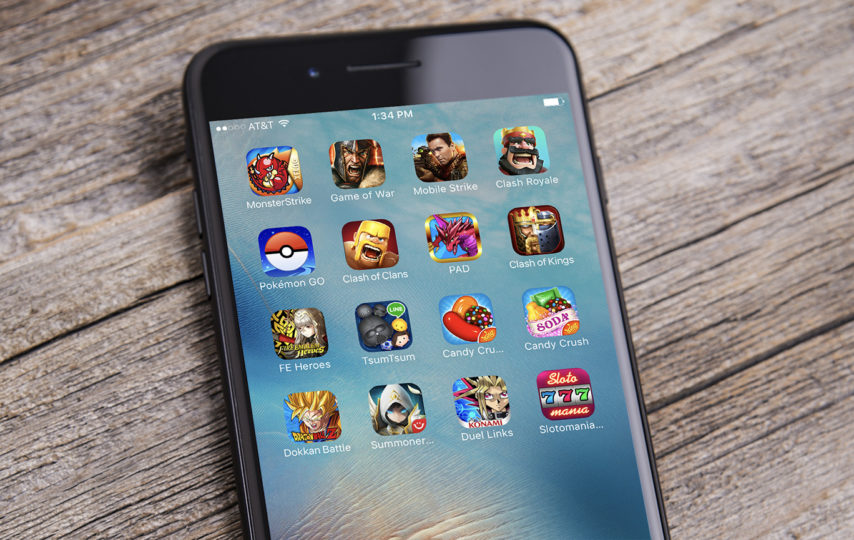The mobile video games popularity is growing every year, due to the emergence of the mobile Internet, cheap high-quality smartphones and tablets. The global mobile games market is dominated by Japan and the United States, followed by China and emerging economies, and almost everyone in the G20 has a mobile phone. Cheap or free downloads make installing a game on a smartphone a simple impulse decision, as opposed to buying a $ 500 console or a $ 60 game disc. It is much more convenient to play on the phone “in between times”, without access to a TV screen, set-top box or computer.
In the 2010s, mobile platforms created a new sales channel. In addition to amateur gamers who purposefully buy a console or games for a computer, there is a category of “a person, while in the subway on the way to work, playing on his smartphone.” This led to a functional games simplification in order to adapt them to the limited phone capabilities compared to a joystick or keyboard. This simplification goes hand in hand with the trend towards better graphics and effects, said Michael Boettcher from Storm International.
By the end of 2020, the mobile games market may grow by 26% and add 10% annually. Mobile devices will become a key platform for cloud gaming thanks to the widespread adoption of 5G technologies and the smartphone convenience. Mobile games are considered to be a promising market that can generate high profits with a low entry threshold. One of the most active players in this field is the Chinese internet holding Tencent, which regularly buys developers. Making mobile games remains quite cheap, unlike games for consoles and computers, the development of which is becoming comparable to the filming of a Hollywood blockbuster. Projected spending on mobile games in the App Store and Android apps could exceed $ 100 billion in 2020.
IT giants place in the gaming market
Another trend is the entry of such large technology companies as Amazon, Apple, Google and Nvidia into the gaming market, namely in the cloud gaming field. According to NewZoo, 16% of women and 21% of men who play mobile games for the first time use cloud gaming.
In 2013, Nvidia began testing the Nvidia Grid service, which offers games that were already purchased on Steam but not installed on the computer being used. This is one of the first examples of streaming games through cloud without the need for installation. The full version of the GeForce Now service was launched in February 2020 and runs on Mac OS, Windows, Android TV, phones, and Chromebooks. According to Nvidia, 4 million people have signed up for the service since launch, streaming 15 million hours a month.
In November 2019, Google launched Stadia, a cloud gaming service that lets you buy games (subscription catalog) and stream them over the cloud. Google Stadia runs on the Chrome browser platform, which means it’s compatible with most operating systems. Users do not need to buy expensive equipment with powerful processors to play, but performance drops at low internet speeds, added Darren Keane about Shangri La specific.
After a year of public beta testing, Microsoft launched its own xCloud platform in September 2020. The service is available to Xbox Game Pass Ultimate subscribers. After activating the subscription, the client not only gets access to more than a hundred games on PC and XBox one, but also the ability to play games on the screen of any device (so far only based on Android), which are broadcast directly from Microsoft Azure servers.
Just a couple of weeks after Microsoft released xCloud, Amazon announced the Luna service, which will run on Amazon’s cloud platform. When Luna will go public is not yet clear.
The entry of IT giants into the games market is complicated by the lack of their own unique content, which can lead to limited demand. Until these services are able to deliver their content or make deals with popular game producers, they are unlikely to achieve widespread popularity – it will take at least 3-5 years (this is how much it takes to develop a blockbuster game from scratch). To address this issue, Google Stadia’s cloud gaming division acquired Typhoon Studio, a Montreal-based AAA game development home. The move is part of Stadia’s plan to double the headcount within the company to create exclusive content for its platform.
As a result, consumers will be less tied to their computer or console and will be able to play anywhere and from anything (the so-called platform-agnostic), noted Darren Keane, Storm International CEO. It will be possible to launch a game that requires a powerful gaming computer from a weak computer or smartphone, shifting the technical requirements to the server. It will be cheaper and more convenient.
In turn, market participants may find themselves in a situation where, instead of selling most games with high margins, they will have to negotiate the inclusion in the catalog of IT giants with a likely decrease in the average check per user for access to a single game. In theory, this should be compensated for by increased volume due to greater market access, but it could create preconditions for unequal battles between giant companies and small developers, as was the case in the conflict between Apple and Fortnite.













